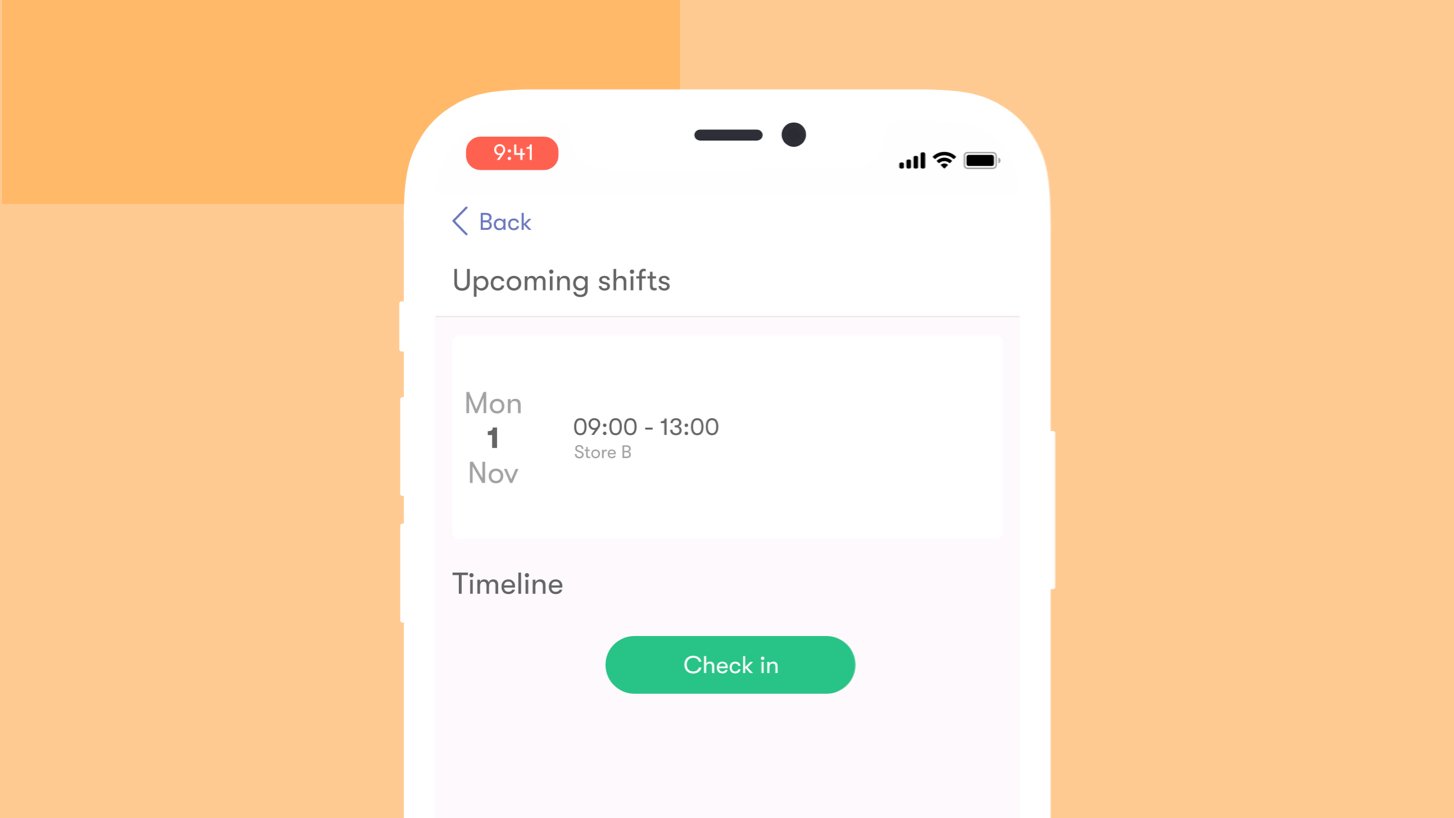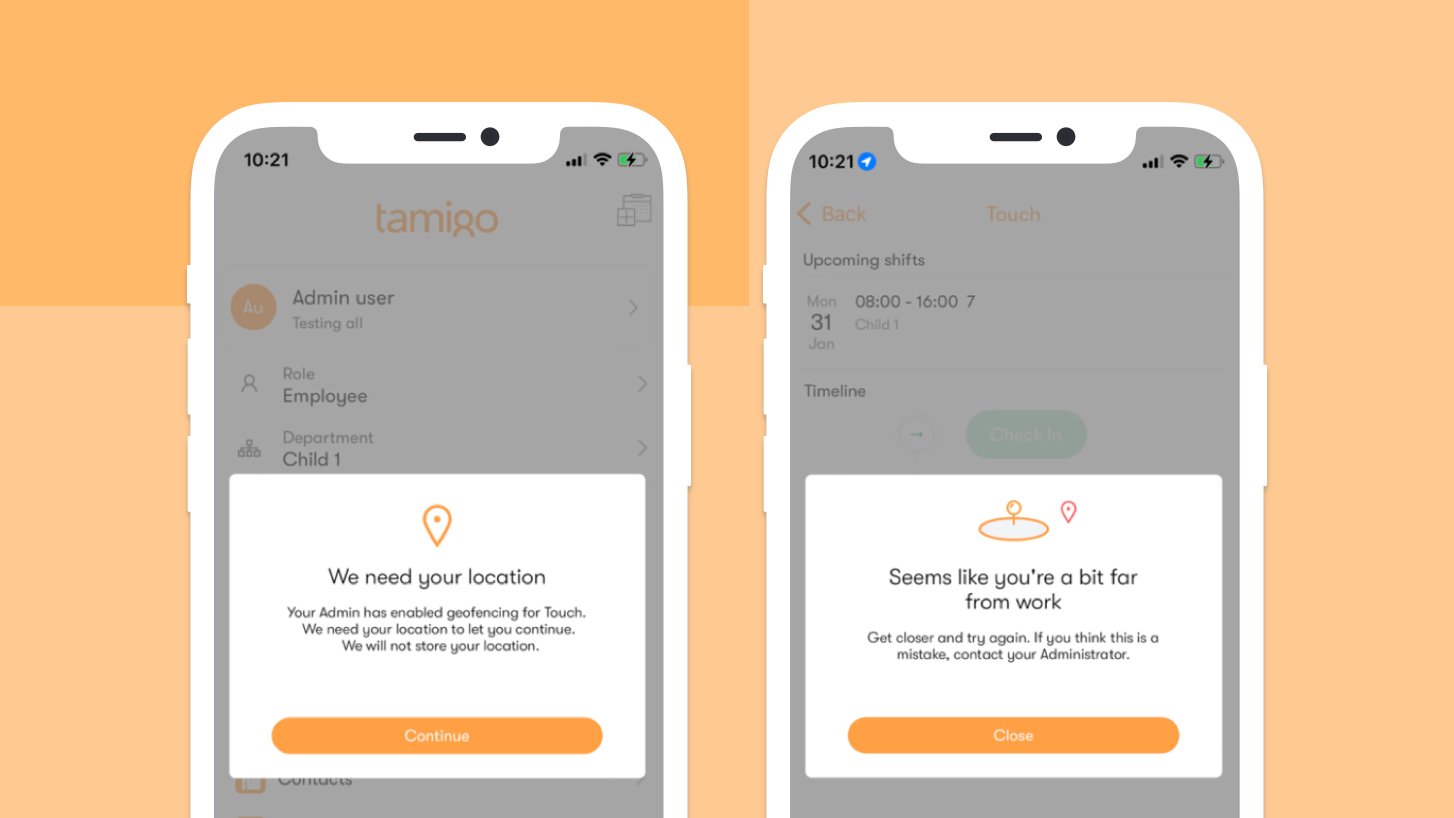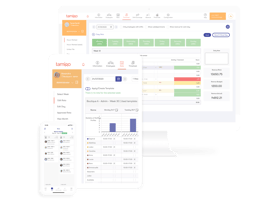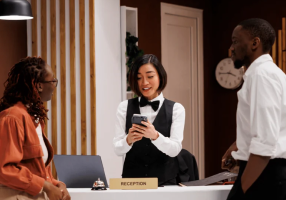Tracking worked hours is essential for every restaurant.
It’s a legal requirement in many countries for starters. There's a whole host of other reasons too, such as more accurate payroll and greater transparency over labour costs.
So what’s the best method of recording staff check-ins? More and more restaurants are going mobile, with a time clock app. Let’s talk about why.
What is a time clock app?
Mechanical time clocks have been around since the late 1800s. Employees would insert a cardboard timecard into a bulky machine that stamped it with the date and time.
Technology has moved on since then.
On-site time clocks still exist, though they’re more likely to be electronic or biometric.
But another increasingly popular type of time clock is app-based. It lets employees to clock in and out, and record breaks, right on their phones.
Some mobile time clocks come as standalone. Others, like tamigo Touch, are just one of the tools included in an all-in-one workforce management solution. In these cases, the time clock is fully integrated with time and attendance, meaning there’s one seamless flow of information.
Why choose a mobile time clock for your restaurants?
If you're thinking about getting time clocks, here's why an app should be top of your list.
Reduce admin for managers
Restaurant managers pursued their careers because they love food and the buzz of creating a wonderful dining experience. They didn’t do it to sit in the back office for hours on end.
Mobile restaurant time clocks like tamigo’s reduce their administrative workload.
No more manually filling in spreadsheets with employees’ worked hours. Instead, those records are automatically fed from the time clock into timesheets.
The manager can then simply review those hours when they close out the day.
Time clock data is also invaluable for reporting too. In the tamigo Check In/Out report, managers can compare planned and worked shifts. Did employees arrive early or late for work or were they on time?
Make T&A easy for employees
One big advantage of mobile time clock apps is their accessibility.
We do everything on our phones. And that’s especially true for millennials and Generation Z, who make up a big percentage of restaurant workforces.
With a mobile time clock, recording hours can become as second nature as opening Instagram – reducing the chances of forgotten check-ins or -outs.
Plus, there’s the issue of trust. With manual time keeping methods, your staff must rely on their managers to convert worked hours into accurate time and attendance records.
An app removes this step because that data is automatically added to timesheets. It’s up to the manager to review these records, but it’s less open to human error.

Save time on company payroll
Your restaurant business has a payroll software, but that isn’t involved in the most time-consuming part of the payroll process – namely, collecting staff’s actual worked hours.
For this, a lot of restaurants still rely on paper timesheets or spreadsheets. These are filled out manually, then sent backwards and forwards between restaurants and the payroll responsible person in HQ.
Integrated time clock apps and WFM software streamline this process. Closed-out pay periods are automatically sorted into different wage components (including overtime, bank holidays, etc.) per every employee’s contract.
It's all collected in a single export file — ready to import into whatever payroll software you use.
Restrict clock-ins to restaurant locations
Geofencing establishes a virtual perimeter around a real-world location. This perimeter then triggers a response from any mobile device which enters it. This could, for instance, be an in-app notification or a text.
When combined with a mobile time clock, geofencing restricts staff check-ins and -outs to a certain distance from work locations.
This ensures the right hours are being recorded at the right place. This is especially useful if you have staff working between different restaurants during the week.
Geofenced time clocks also guard against employees punching in for a colleague (i.e., time theft).

Stay compliant with EU regulations
Keeping a record of employees’ worked hours is a legal requirement in most EU countries.
In a 2019 ruling, the Court of Justice of the European Union stated:
“Member States must require employers to set up an objective, reliable and accessible system enabling the duration of time worked each day by each worker to be measured.”
What form this system takes is not mandated. But implementing it with smart, digital tools seems the obvious choice for multi-site restaurant businesses, as it offers the chance to standardise and automate the process across locations.
Don't break the bank
Restaurants operate on fine margins.
For full-service restaurants, the average profit margin falls somewhere between 3-5%, while it’s slightly higher for fast food and casual establishments.
Buying electronic or biometric on-site time clocks for every single location can be pricey.
Mobile restaurant time clocks are extremely cost-effective by comparison. They utilise equipment that all your employees have already – their phones! tamigo’s mobile app is free to download for all tamigo users.
But if you’d still prefer to go with the on-site, tamigo can handle that too. Our time clock also works on tablets. Set these up for staff to use when they step through the doors.
Curious to learn more about tamigo? Head to our dedicated restaurant page below.





